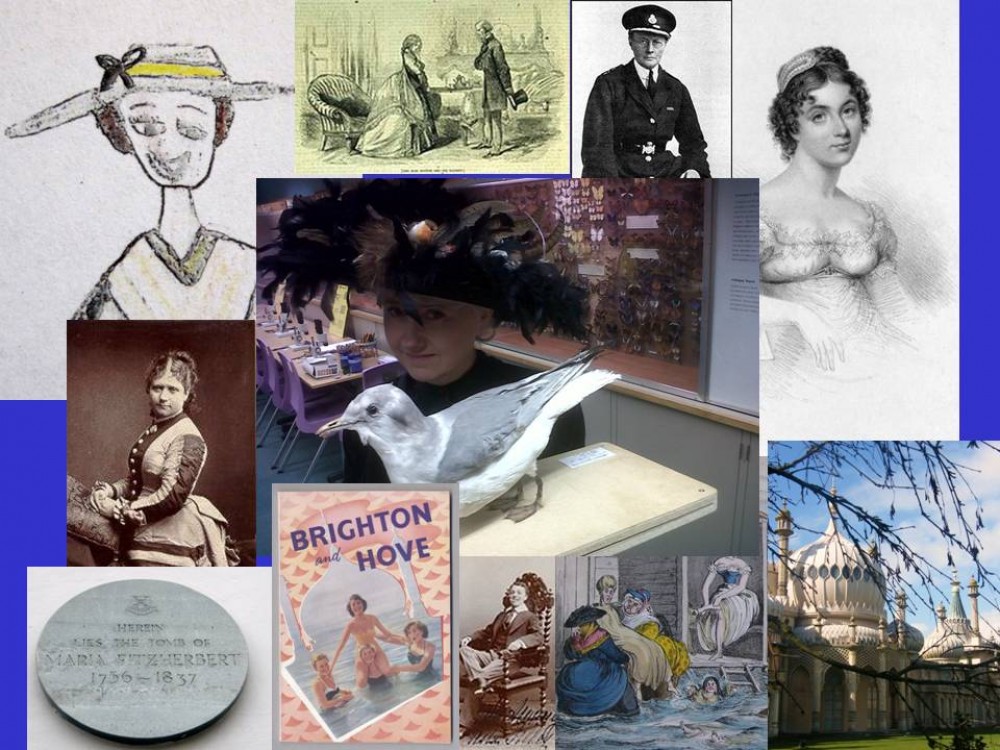
This incredible picture is of Doreen Valiente. She lived in Brighton and is (so far) the only woman to be awarded a blue plaque for services to witchcraft. An exhibition focusing on her, her practice, and the great leaps forward she made in the understanding and acceptance of Pagan beliefs in the second part of the twentieth century has just opened at Preston Manor, near Preston Park, Brighton. Fans of Preston Manor know that it’s no stranger to people with non-mainstream beliefs. Members of the Thomas-Stanford family took part in a well-documented séance in the Manor’s Cleves Room in 1897 after various hauntings started to be a nuisance. After events such as strange smells, sightings of people on staircases and, most disturbing of all, an untethered hand that was seen going up and down a bedpost by a visitor, a medium was called. It was discovered that an ex-communicated nun who hadn’t been given a proper burial and had lain outside for a few centuries was making her presence known. Sure enough a body was found and the nun, at last, given a more respectable resting place. It would be nice to think that Preston Manor was subsequently free from ghostly activity but unexplained creakings, bangings and odd events are still being reported today. It’s no surprise that Doreen Valiente liked Preston Manor. In fact, an early guidebook she owned is one of the exhibits.

Lots of other things are on display – Doreen’s altar, her ‘book of shadows’ (a personal book of Wiccan religious texts and magic rituals) and, particularly stunning, some small wooden goddess carvings and a carving made by Doreen herself of the Roman god, Janus. It’s a great opportunity to get a feel for the life of this fascinating woman as well as a chance to see some of the accoutrements of a modern-day witch. The exhibition is very good on explaining the roots of ancient, pre-Christian beliefs and how these started to be discovered again, largely thanks to the work of Doreen.

Born in Surrey in 1922, Doreen began exploring her interest in the occult and experimenting with magic spells while still at school. Horrified, her Christian parents sent her straight to a convent but she left at fifteen, refusing to go back. In the early 1950s she became aware of the work of Gerald Gardner who, after stumbling upon a group of witches in the New Forest and becoming part of their coven, had set up a Museum of Magic on the Isle of Man. She started to correspond with Gardner and in 1953 – just two years after witchcraft stopped being illegal in this country- she was initiated into his coven. Doreen’s contribution to the understanding and accessibility of witchcraft and Pagan beliefs was decisive. Seeing that Gardner wasn’t as gifted with words as she was, she used her considerable organisational skills and creativity to rewrite his interpretations of the old ancestral religions and basic rituals which formed the core of the new Pagan religious movement known as Wicca. Doreen, who also has books of poetry to her name, was never afraid of talking openly about the subject and is considered the mother of modern witchcraft. Her books ‘Where Witchcraft Lives’, an exploration of Sussex folklore, ‘An ABC of Witchcraft’, ‘Natural Magic’ and ‘Witchcraft for Tomorrow’, brought witchcraft into the 20th century and became essential reading for anyone interested in the subject. In later life Doreen helped establish The Pagan Front, later transformed into The Pagan Federation, which aimed to fight prejudice against pagans in society and the media. She would also come to serve as patron of the Sussex-based Centre for Pagan Studies, a resource facility for those wishing to learn more about the ancient religions of the world.

The exhibition feels very much at home in the Manor’s dark-panelled Maquoid Room (above) with its creaking floorboards and hushed atmosphere. With Paganism being the seventh largest faith group in Britain, this exhibition is as important as it is fascinating.
‘Folklore, Magic and Mysteries: Modern Witchcraft and Folk Culture in Britain’ is at Preston Manor until Autumn 2016. Admission free to the exhibition after paying for admission to Preston Manor. For more information regarding opening times, etc, see here: http://brightonmuseums.org.uk/prestonmanor/plan-your-visit/
The Doreen Valiente Foundation, who look after Doreen’s legacy, are here:http://www.doreenvaliente.com/Doreen-Valiente-About_The_Foundation-3.php






